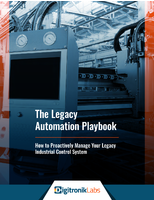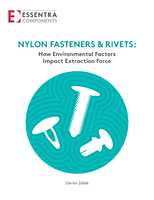ASTM International requests papers for 2009 symposium.
Press Release Summary:
ASTM International is inviting paper submissions for 30th Symposium on Pesticide Formulations and Delivery Systems: Regulations and Innovation, to be held October 20-22, 2009. Participants can submit preliminary abstracts by May 22, 2009 and will be notified of acceptance by June 26. With Dr. P. V. Shah of the EPA as keynote speaker, the event will feature presentations on biopesticides, drift reduction, and development of multiactive formulations as well as industry commentary.
Original Press Release:
Papers Needed for ASTM Symposium on Pesticide Formulations and Delivery Systems
Formulations and Delivery Systems: Regulations and Innovation
W. CONSHOHOCKEN, Pa., 13 January 2009 - Papers are invited for the 30th Symposium on Pesticide Formulations and Delivery Systems: Regulations and Innovation, to be held Oct. 20-22, 2009, in Atlanta, Ga. Sponsored by ASTM International Committee E35 on Pesticides and Alternative Control Agents, the symposium will be held in conjunction with the Oct. 19-23 standards development meetings of the committee.
The annual ASTM Symposium on Pesticide Formulations and Delivery Systems serves as a multidisciplinary forum for scientists, applicators, regulators and business people to exchange information and to learn about state-of-the art products and practices that meet or exceed current market needs. It is devoted to all aspects of the agrochemical industry, from new inert ingredients, formulations, application equipment and application techniques to regulatory requirements. This year will include presentations on biopesticides, drift reduction, and development of multi-active formulations as well as commentary from some of the original members of Subcommittee E35.22 on Pesticide Formulations and Delivery Systems on the changes they have observed and addressed in the industry over the past 30 years. In addition, this year's keynote speaker will be Dr. P. V. Shah, chief of the Inert Ingredient Assessment Branch, Registration Division, EPA.
To participate in the symposium, presenters/authors must submit the online abstract submittal form at www.astm.org/MEETINGS/COMMIT/e35symp1009.htm and attach a 250-300 word preliminary abstract by May 22, 2009. The abstract must include a clear definition of the objective and approach of the work discussed, pointing out material that is new, and present sufficient details regarding results. The presentation and manuscript must not be of a commercial nature nor can it have been previously published. Symposium chair Dr. David Lindsay will notify you by June 26, 2009, of your paper's acceptability for presentation at the symposium. If the preliminary abstract is accepted, the presenter/author will be requested to submit a final camera-ready abstract several months before the symposium. The final abstracts will be distributed in a booklet at the symposium.
Symposium presenters are required to submit their papers to the Journal of ASTM International (JAI). JAI is an online, peer-reviewed journal for the international scientific and engineering community. You may access information about JAI at www.astm.org/JAI. Additionally, you may wish to review the new Web-based submission and peer-review site at jai.peerx-press.org. Manuscripts to be peer reviewed for JAI are due online by Oct. 20, 2009. Once the final selection of abstracts is approved, ASTM will send authors' instructions via e-mail. The author will receive a copy of his/her paper in a PDF.
Additional information is available from symposium chair A. David Lindsay, Ph.D., Evonik Goldschmidt Corp., Hopewell, Va. (phone: 804-452-5648; david.lindsay@evonik.com); or co-chair Richard Zollinger, Ph.D., North Dakota State University, Fargo, N.D. (phone: 701-231-8157; r.zollinger@ndsu.edu).
Established in 1898, ASTM International is one of the largest international standards development and delivery systems in the world. ASTM International meets the World Trade Organization (WTO) principles for the development of international standards: coherence, consensus, development dimension, effectiveness, impartiality, openness, relevance and transparency. ASTM standards are accepted and used in research and development, product testing, quality systems and commercial transactions around the globe.




